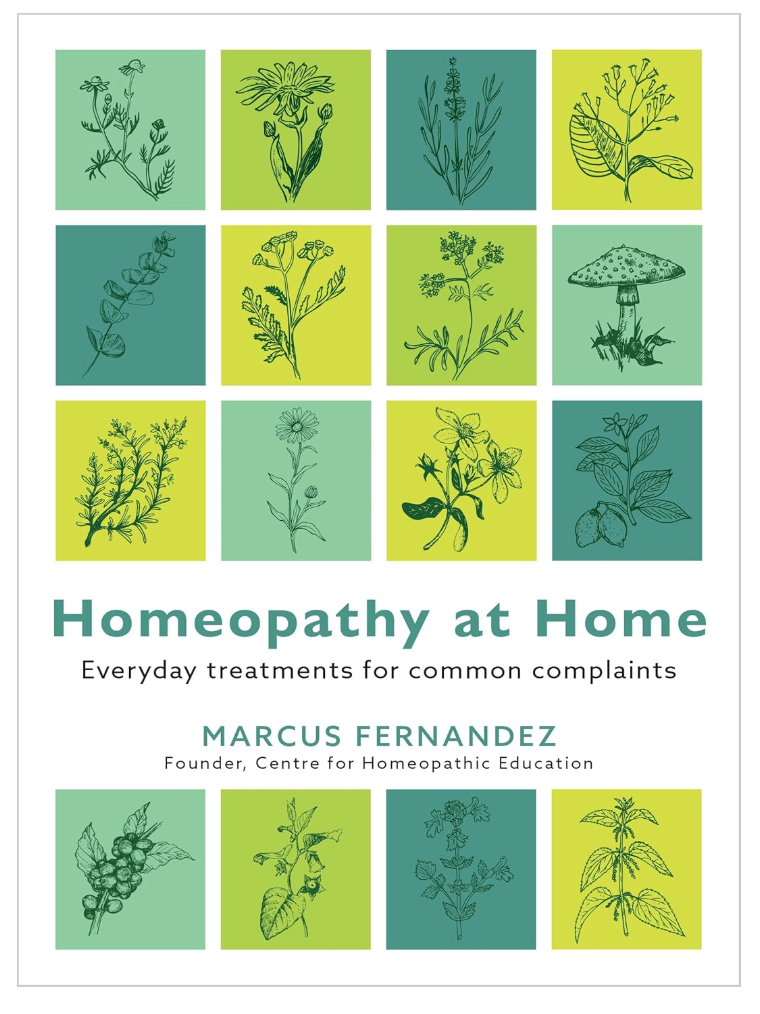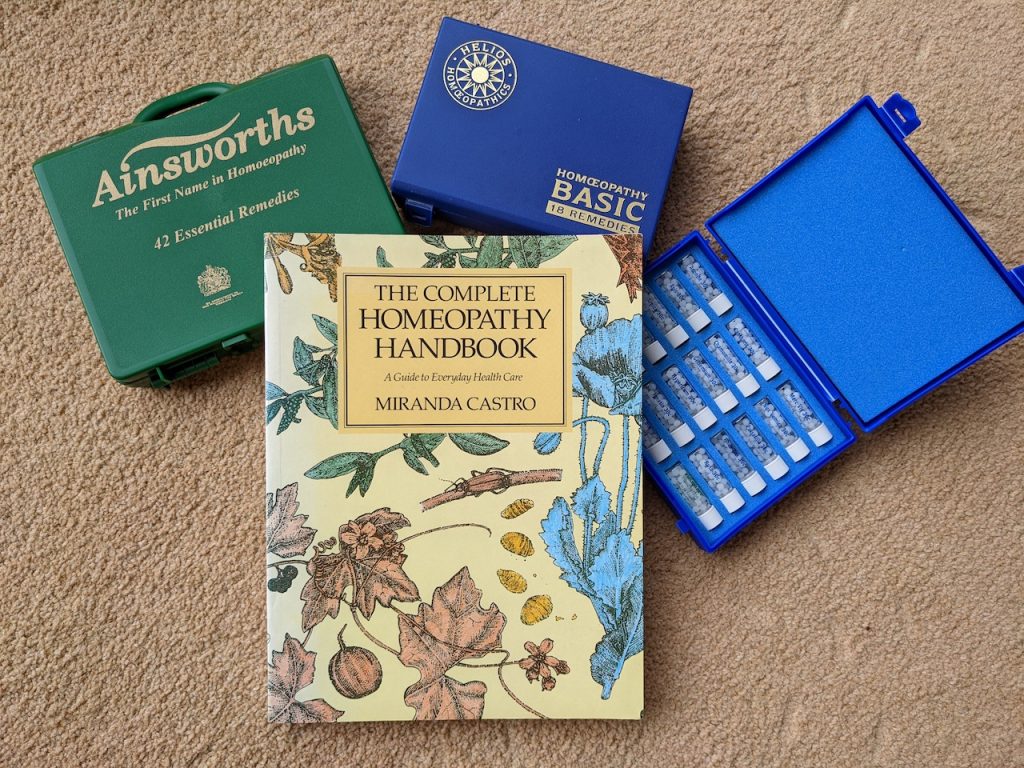Homeopathy at Home – Everyday Treatments for Common Complaints is a new book written by Marcus Fernandez, Principal of the Centre for Homeopathic Education (CHE) in London. Marcus has been working in Homeopathy for three decades.
The book is a practical and simple-to-use guide for those interested in using homeopathy to help with typical health condition that affect us all. It retails at under £15. The book describes simply the homeopathic approach and gives guidance on simple prescribing methods.

Later, in this blog I will cover Marcus’s top 10 remedy list. However, ideally you need to have a small remedy kit as mentioned in my earlier blogs on first aid. Both Ainsworths and Helios sell these.
Whilst the pharmacies can send a remedy out in 24h, this is not much help when looking after a sick child at midnight on a Saturday (which according to some unwritten law is what always seems to happen!)

Let’s start 2025 by restating some basic principles. Homeopathy contrasts orthodox medicine in that it sees symptoms as the attempt of the body to reestablish harmony. What do I mean by harmony? Put simply when there is harmony – that is to say we are ‘well’ – no symptoms are apparent. Given the orchestration of trillions of cells in the human body, this is quite astonishing.
Marcus gives the example of the child who can run around all day, go to bed tired, wake up fully refreshed an run around the next day in the same manner. Boundless energy – that is a body in harmony with itself.
Sadly that state may diminish somewhat as we age, but nonetheless we go about our day pretty oblivious to our bodies and the complexities of its inner workings.
One of the most obvious signs of disharmony is pain. The orthodox approach is to manage these symptoms. The marketer’s – you surely notice – encourage us to seek out over the counter medicines like Paracetamol (Tylenol in the USA). Apparently some 35 tonnes per annum of Paracetamol is used per million of the population in the UK. Nice little earner!
Paracetamol is effective of course, but only at the level of suppression of symptoms. It is not curative. Much the same can be said of many prescribed drugs also.
In the end it is the body itself the does most of the healing.
This is where Homeopathy comes in. Homeopathic medicines are not drugs in the conventional sense, they are ultra dilutions and their purpose is to stimulate the innate healing potential that we all have.
Prescribing homeopathically is not quite as simple as picking up a box of Paracetamol. Nor can you say you take X for Y, though as Marcus’s book shows there are for first aid purposed typically four to six remedies that have particular affinity to each common complaint.
Prescribing homeopathically is governed by the law of similars, meaning that the symptom picture of the patient should match the ‘picture’ of the remedy.
A child (and it typically is a child) with a sudden high fever might be given Belladonna, because the Belladonna picture has high fever of a particular type. The characteristics of an Aconite or Gelsemium fever is different. Thus each remedy has its keynotes – and much of Marcus’s book is about keynote prescribing.
To help identify these keynotes he uses a nmenonic CLAMS.
Another approach is to draw a circle and divide it into four quadrants. Two quadrants are for aetiology (cause) and modalities as above, another is for affinity (= location) and the last covers symptoms (a combination of C and S in the CLAMS method).
Either way the aim is to get as full a picture as possible about what is going on.
Marcus has a top 10 remedy list – here are some example keynotes:
If you wish more guidance, or to explore the potential benefits of Homeopathic treatment, please book a discovery call via my website or mail me at [email protected] and I will respond by return